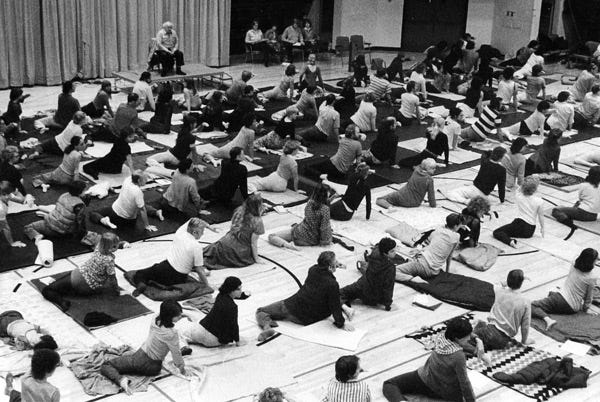Wisdom practice disguised as 'movement practice'
Why the Feldenkrais Method is about so much more than movement
“A fundamental change in the motor basis within any single integration pattern will break up the cohesion of the whole and thereby leave thought and feeling without anchorage in the patterns of their established routines.
In this condition it is much easier to effect changes in thinking and feeling, for the muscular path through which thinking and feeling reach our awareness has changed and no longer expresses the patterns previously familiar to us. Habit has lost its chief support, that of the muscles, and has become more amenable to change.”
- Moshe Feldenkrais
The Feldenkrais Method, perhaps best known as a “cure for back pain,” is so much more than that. I like to say that it is a wisdom practice disguised as a movement practice.
While effective pain relief is a great reason to get started with Feldenkrais, what is actually on offer is the opportunity to dive way below the surface of your personality traits to uncover more of the natural expression of yourself as a biological organism and as a soul on a lifelong quest for truth.
What could easily be mistaken for “group movement classes” or “individual hands-on touch therapy” - because that is what the Feldenkrais Method looks like when observed from the outside - is actually a deep dialogical self-inquiry.
But it isn’t about ideas.
The “questions” you ask yourself in this practice are the movements themselves. The answer you receive are the sensations.
By moving slowly and mindfully, you become aware of details of the experience that you would normally overlook. The carefully chosen sequences of action in an Awareness Through Movement lesson (what happens in a Feldenkrais group class) help wake up the awareness of global patterns in your body such that your ‘parts’ start functioning more and more as a ‘whole.’
While changes in the way the body feels and moves are the most immediately obvious result, long-term students and practitioners of this work can readily recognize changes in their thinking patterns, their attitude towards learning and their overall posture in relation to the world they are navigating on a daily basis.
As the quote at the top of this post suggests, when you change the way you use your muscles in your daily activities, it creates a ripple effect in your experience that can lead to so many other profound changes in your daily life.
When you can breathe and move your head and eyes freely, when you can evenly distribute muscular effort throughout your body, when you can balance your weight with confidence and have a clear sense of where all parts of yourself are in space . . .
These qualities don’t just change your experience of your body.
They change your overall experience of being.
After over a decade of practicing the Feldenkrais Method, it’s become clear to me that the same learning strategies that make this approach so effective at improving our physical movement are applicable to a wide range of other situations.
Strategies like:
Slowing down your action in order that more of its details can be observed
Varying the use of your attention while observing the action to notice new things
Constantly making adjustments to minimize unnecessary efforts
Identifying your habitual patterns and exaggerating them to study what they do
Deliberately exploring non-habitual patterns to expand your range of possibilities
Abandoning goal-orientation to make space for the learning value of mistakes
Exploring action entirely within the realm of the imagination
For example, what many coaches and therapists do with their clients might be described in similar terms although the “action” being examined might have more to do with a person’s relationship to themselves, their loved ones or their life pursuits than their physical movement.
Did I make you curious?
I’m going to be diving deeper into these themes on Monday, May 6 - which also happens to be Moshe Feldenkrais’s 120th birthday (he died in 1984) - at 4pm EST
The title of my talk will be The Feldenkrais Method as a Wisdom Practice and will be one of 20 different presentation at the Summit.
Register here (this is an affiliate link, so if you decide to upgrade to get permanent access to all the content, I will get a % . . . )







So true! Thanks Seth. And I wonder… could it be wisdom that doesn't move isn’t really wisdom at all?
I look forward to attending this event!